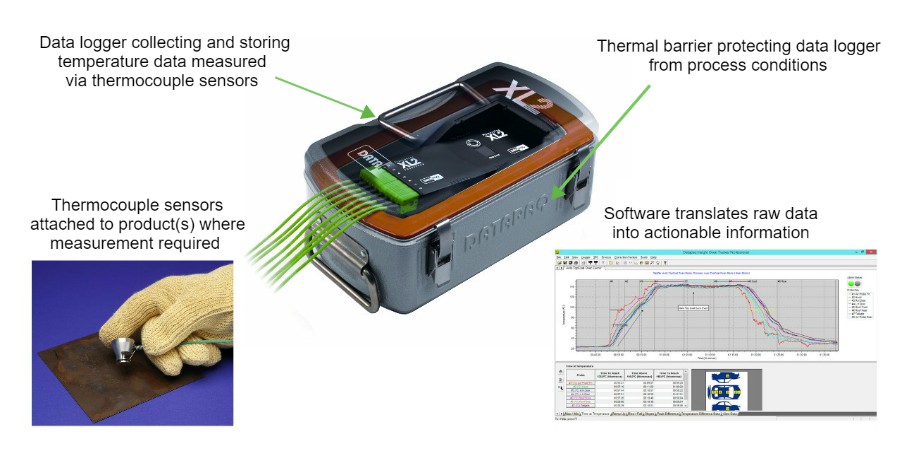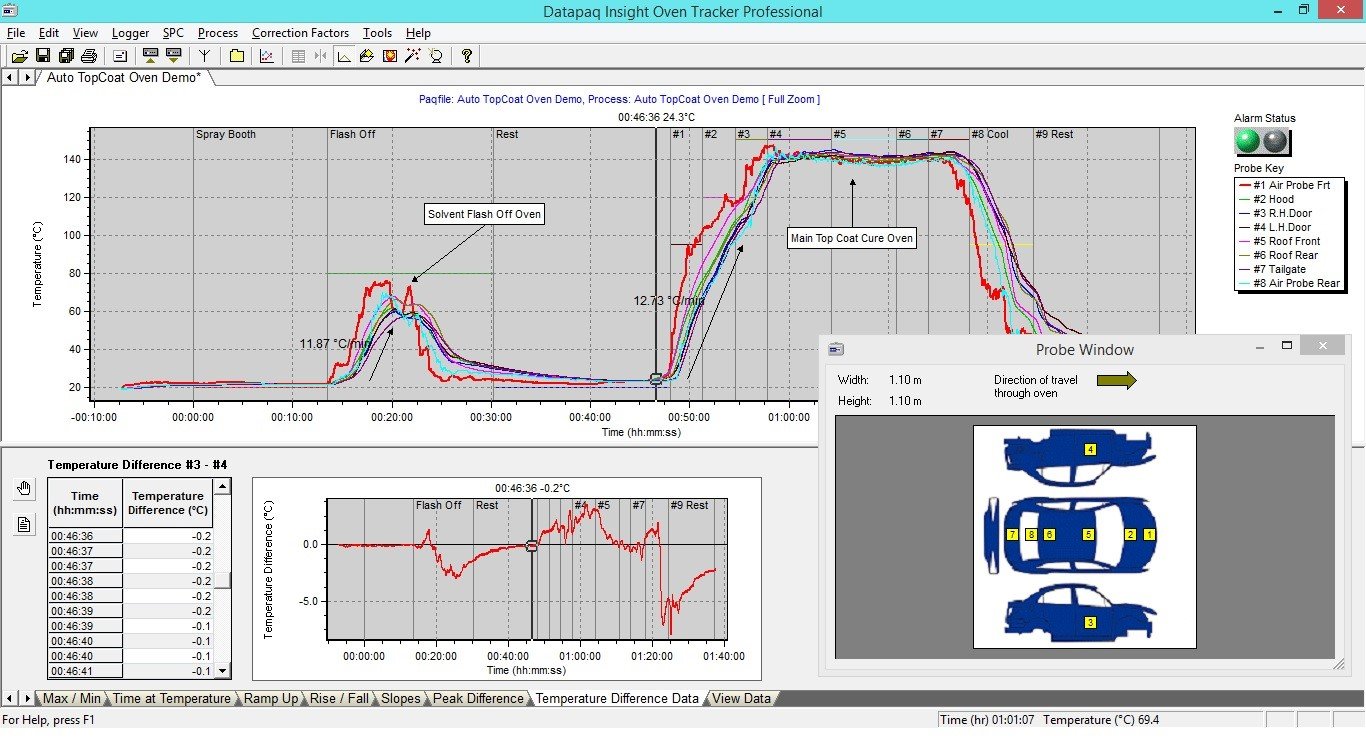Temperature profiling is the term used to describe the process of recording and interpreting the temperatures of products and/or air through a conveyorized heat-treating process. Temperature data is measured continuously using thermocouples connected directly to the product(s) at different locations as it travels through the oven or furnace.

The necessary components of an effective thermal profiling system are:
- Thermocouple sensors to gather temperature information
- Data acquisition loggers to collect the data
- Thermal barriers to protect the data loggers
- Temperature profiling software for the analysis and archiving of all temperature data
The measured temperature readings are stored in the data logger, which moves along with the product and is protected from the hostile environment of the process by a thermally insulated box referred to as a thermal barrier. Either during the process via a radio telemetry link or post-process, the temperature profile data is retrieved from the data logger and transferred to a computer software package where it can reviewed, analyzed and reported.
Temperature data collected from the profiling operation provides a time vs temperature graph showing what temperatures the product experienced during the entire heating procedure.

The oven control thermocouples will only show the air temperature within the process; the profiling system can measure both surface and core temperatures of the product and it is these that are critical to product quality.
In its simplest form, the temperature profile tells you how hot your product became and for how long, and what temperatures it reached and at what point. Process engineers know what the perfect profile for their product should be; variations from the ideal indicate a potential problem or unacceptable quality. By analyzing the profile, they are able to verify products are of the highest quality, increase throughput, and solve production problems.
Benefits of Temperature Profiling Include:
- Improved product quality
- Increased productivity
- Minimized energy costs
- Validated process control (QS/ISO9001)
- Efficient set up for new process
- Rapid troubleshooting
To learn more about thermal profiling in various industrial applications, download Temperature Profiling: Understanding the Basics Whitepaper